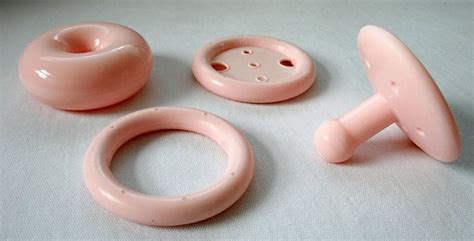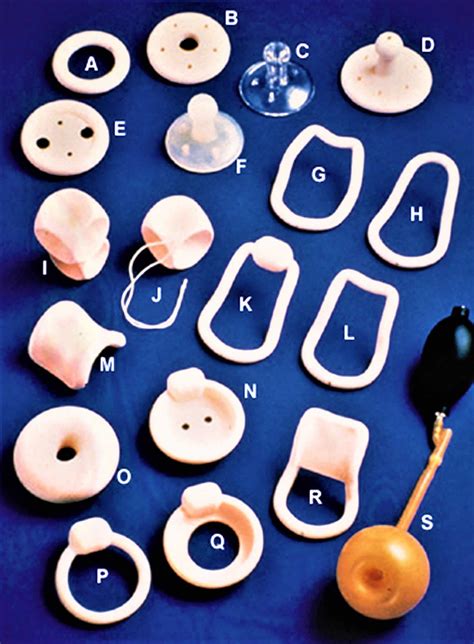Intro
Discover what is pessary, a medical device for pelvic organ prolapse, incontinence, and uterine support, exploring types, uses, and benefits, including ring, donut, and Gellhorn pessaries.
Pessaries have been a vital component in the management of pelvic organ prolapse and other related conditions for centuries. The importance of understanding pessaries cannot be overstated, as they offer a non-surgical approach to treating these conditions, improving the quality of life for countless individuals. As we delve into the world of pessaries, it becomes clear that their significance extends beyond mere medical devices, representing a beacon of hope for those seeking alternative solutions to surgery.
The concept of pessaries has evolved significantly over time, with early models being made from materials such as wood, stone, and even metal. Thankfully, modern pessaries are designed with comfort and efficacy in mind, utilizing materials like silicone, latex, and plastic. This evolution is a testament to the ongoing efforts to improve patient outcomes and satisfaction. As we explore the realm of pessaries, it becomes apparent that their benefits are multifaceted, catering to a wide range of needs and preferences.
The use of pessaries is not limited to pelvic organ prolapse; they can also be employed in the management of conditions like urinary incontinence and rectal prolapse. This versatility underscores the importance of pessaries in the field of urogynecology, where they serve as a valuable tool for healthcare providers. As we navigate the complexities of pessary use, it is essential to consider the various types, sizes, and materials available, each designed to address specific needs and ensure optimal comfort.
Introduction to Pessaries

Pessaries are medical devices inserted into the vagina to support the pelvic organs, providing relief from symptoms associated with prolapse and incontinence. They work by applying gentle pressure to the affected areas, helping to reposition the organs and alleviate discomfort. With proper fitting and care, pessaries can be an effective and comfortable solution for many individuals.
Types of Pessaries
There are several types of pessaries available, each designed to address specific needs and conditions. Some common types include: * Ring pessaries: These are the most common type, consisting of a flexible ring that is inserted into the vagina. * Donut pessaries: Shaped like a donut, these pessaries are designed to provide additional support and are often used for more severe prolapse. * Gellhorn pessaries: These pessaries have a unique shape, featuring a series of knobs that help to support the pelvic organs. * Cube pessaries: As the name suggests, these pessaries are cube-shaped and are often used for more complex cases of prolapse.Benefits of Pessaries

The benefits of pessaries are numerous, making them an attractive option for individuals seeking non-surgical solutions to pelvic organ prolapse and related conditions. Some of the key advantages include:
- Non-invasive: Pessaries do not require surgery, making them an excellent choice for those who wish to avoid operative procedures.
- Reversible: Pessaries can be easily inserted and removed, allowing individuals to try different types and sizes until they find the one that works best for them.
- Comfortable: Modern pessaries are designed with comfort in mind, ensuring that individuals can go about their daily activities without discomfort or hassle.
- Cost-effective: Compared to surgical options, pessaries can be a more cost-effective solution, especially in the long term.
How Pessaries Work
Pessaries work by applying gentle pressure to the pelvic organs, helping to reposition them and alleviate symptoms associated with prolapse and incontinence. The exact mechanism of action may vary depending on the type of pessary used, but the overall principle remains the same. By providing additional support, pessaries can help to: * Reduce symptoms of prolapse, such as pelvic pressure and discomfort * Improve bladder control and reduce urinary incontinence * Enhance overall quality of life, allowing individuals to engage in activities without restrictionPessary Fitting and Care

Proper fitting and care are essential to ensure the effectiveness and comfort of pessaries. A healthcare provider will typically perform a pelvic exam to determine the best type and size of pessary for the individual. Once the pessary is inserted, it is essential to follow proper care and maintenance guidelines, including:
- Regular cleaning and maintenance to prevent infection
- Scheduling follow-up appointments with a healthcare provider to ensure the pessary is working effectively and to address any concerns or issues
- Being aware of potential complications, such as vaginal discharge or odor, and seeking medical attention if they occur
Pessary Complications and Risks
While pessaries are generally safe and effective, there are potential complications and risks to be aware of. These may include: * Vaginal discharge or odor * Irritation or discomfort * Infection * Injury to the vaginal wall or surrounding tissues It is essential to discuss these risks with a healthcare provider and to report any concerns or issues promptly.Pessary Alternatives and Complementary Therapies

In addition to pessaries, there are alternative and complementary therapies that may be used to manage pelvic organ prolapse and related conditions. These may include:
- Pelvic floor exercises, such as Kegel exercises
- Biofeedback therapy
- Physical therapy
- Lifestyle modifications, such as maintaining a healthy weight and avoiding heavy lifting These therapies can be used in conjunction with pessaries or as standalone treatments, depending on the individual's needs and preferences.
Pessary Research and Development
Research and development in the field of pessaries are ongoing, with a focus on improving materials, designs, and overall effectiveness. Some areas of current research include: * Development of new materials and technologies, such as 3D printing * Investigation of pessary use in combination with other therapies, such as pelvic floor exercises * Study of the long-term effects and outcomes of pessary usePessary Use in Different Populations

Pessaries can be used in various populations, including:
- Postmenopausal women
- Women with a history of childbirth or pelvic surgery
- Individuals with neurologic or muscular disorders
- Those with other medical conditions, such as diabetes or obesity It is essential to consider the unique needs and circumstances of each individual when determining the appropriateness of pessary use.
Pessary Use in Pregnancy
Pessaries may be used during pregnancy to support the pelvic organs and alleviate symptoms associated with prolapse. However, it is crucial to consult with a healthcare provider to determine the best course of treatment and to ensure the pessary is properly fitted and maintained.Pessary Cost and Insurance Coverage

The cost of pessaries can vary depending on the type, size, and material. Insurance coverage may also differ, so it is essential to consult with a healthcare provider and insurance provider to determine the best options and coverage.
Pessary Prescription and Fitting
A healthcare provider will typically prescribe and fit a pessary, taking into account the individual's specific needs and circumstances. It is essential to follow their guidance and recommendations to ensure the pessary is used effectively and safely.What is a pessary?
+A pessary is a medical device inserted into the vagina to support the pelvic organs, providing relief from symptoms associated with prolapse and incontinence.
How do pessaries work?
+Pessaries work by applying gentle pressure to the pelvic organs, helping to reposition them and alleviate symptoms associated with prolapse and incontinence.
What are the benefits of pessaries?
+The benefits of pessaries include being non-invasive, reversible, comfortable, and cost-effective, making them an attractive option for individuals seeking non-surgical solutions to pelvic organ prolapse and related conditions.
Can pessaries be used in combination with other therapies?
+Yes, pessaries can be used in combination with other therapies, such as pelvic floor exercises, biofeedback therapy, and lifestyle modifications, to provide optimal relief and support.
Are pessaries covered by insurance?
+Insurance coverage for pessaries may vary, so it is essential to consult with a healthcare provider and insurance provider to determine the best options and coverage.
We hope this comprehensive guide to pessaries has provided you with a deeper understanding of these medical devices and their role in managing pelvic organ prolapse and related conditions. Whether you are considering pessary use or simply seeking more information, we encourage you to reach out to a healthcare provider to discuss your options and determine the best course of treatment. Share your thoughts and experiences with pessaries in the comments below, and don't forget to share this article with others who may benefit from this valuable information.
